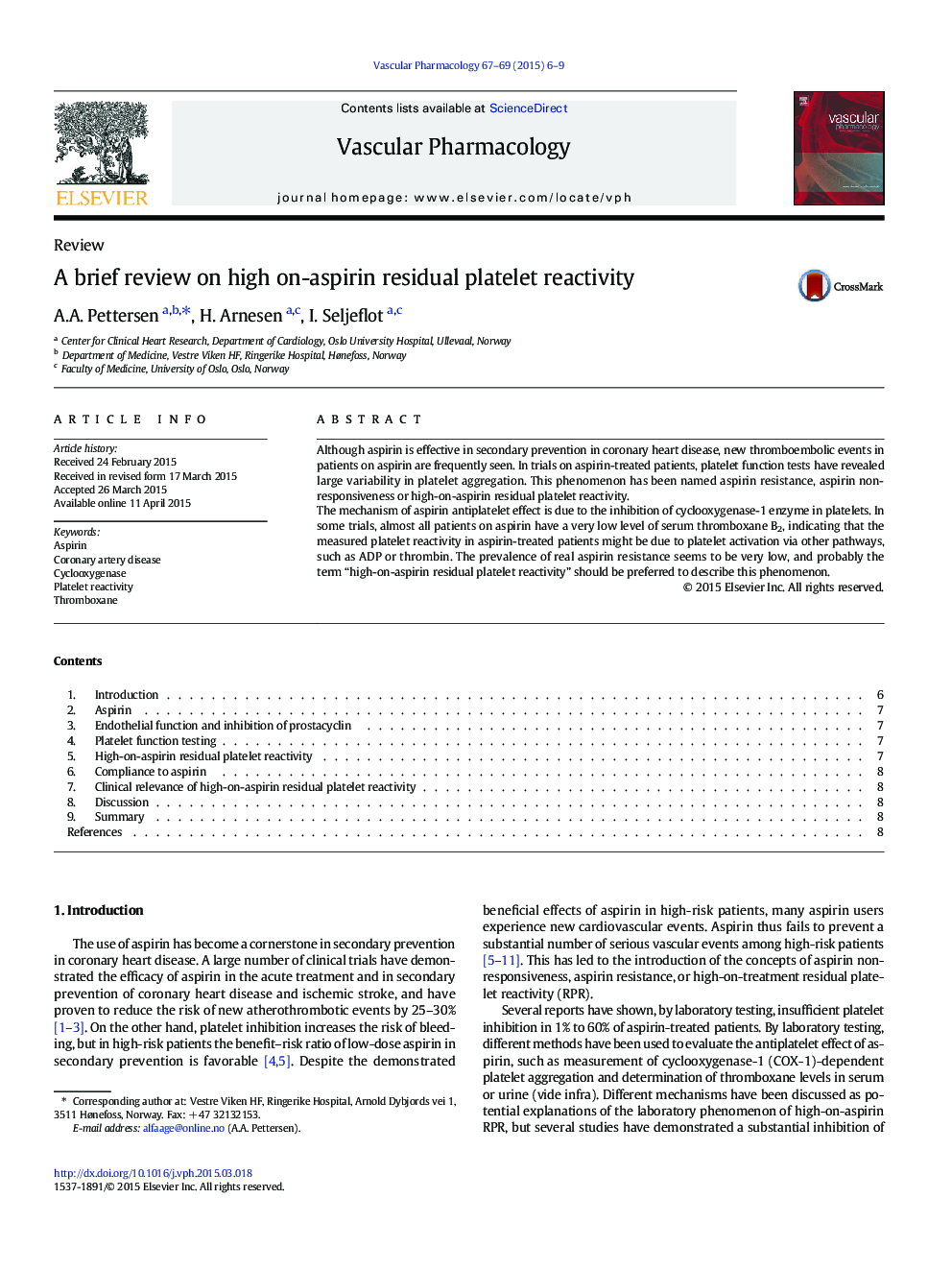| کد مقاله | کد نشریه | سال انتشار | مقاله انگلیسی | نسخه تمام متن |
|---|---|---|---|---|
| 2574120 | 1561249 | 2015 | 4 صفحه PDF | دانلود رایگان |
Although aspirin is effective in secondary prevention in coronary heart disease, new thromboembolic events in patients on aspirin are frequently seen. In trials on aspirin-treated patients, platelet function tests have revealed large variability in platelet aggregation. This phenomenon has been named aspirin resistance, aspirin non-responsiveness or high-on-aspirin residual platelet reactivity.The mechanism of aspirin antiplatelet effect is due to the inhibition of cyclooxygenase-1 enzyme in platelets. In some trials, almost all patients on aspirin have a very low level of serum thromboxane B2, indicating that the measured platelet reactivity in aspirin-treated patients might be due to platelet activation via other pathways, such as ADP or thrombin. The prevalence of real aspirin resistance seems to be very low, and probably the term “high-on-aspirin residual platelet reactivity” should be preferred to describe this phenomenon.
Figure optionsDownload high-quality image (125 K)Download as PowerPoint slide
Journal: Vascular Pharmacology - Volumes 67–69, April–June 2015, Pages 6–9
